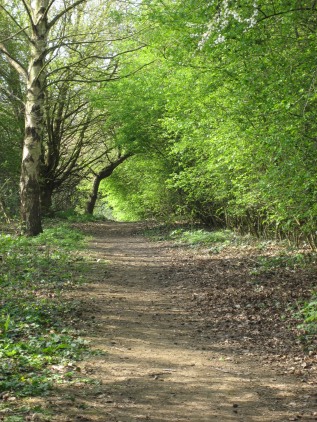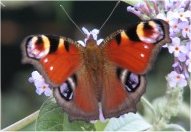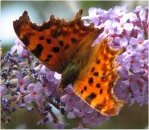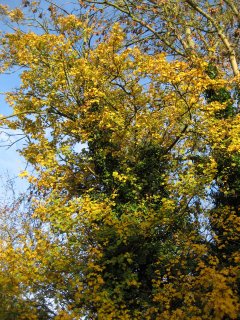 It seems to have been a while since I went out with my scope, so I thought that I would make a trip to the local Country Park. My main reason for this trip was to see if the terns had returned.
It seems to have been a while since I went out with my scope, so I thought that I would make a trip to the local Country Park. My main reason for this trip was to see if the terns had returned.
The trip started well with some good views of a male blackcap singing away close to the entrance. I set my scope up to have a look at the water, but it was pretty empty, mainly inhabited by coot and great crested grebes. Still, undeterred I continued wandering round, hoping to get a glance of some vocal chiffchaffs, if nothing else. The woods were full of noisy great tits and strangely quiet blue tits, not to mention the ubiquitous wrens and robins, but other than that there wasn’t very much to be seen.
There is still a pair of gadwall hanging out in the mangrove swamp end of the park, and whilst I was stood perusing this end of the park I go some fantastic views of a pair of treecreepers.
By the time I got to the far side of the water I had tracked down the taunting chiffchaffs, and listened to a pair of male blackcaps challenge each other to a singing duel at the edge of their territories. I think they both claimed victory as they flew away in opposite directions. As I wandered to the dam I was rewarded with the site of a couple of terns cruising the water. At the visitor centre end of the water the male scaup was still very much in evidence whilst he and the other ducks were busy staying out of the way of about six mute swans who all seemed to think that they were head swan.
I think that I will pack away my scope for the next six months at the country park as most of the water birds seem to have moved on and it is the smaller birds that are reigning at the moment. Time to concentrate on improving my photography skills I think.
In addition to the 32 species of bird that I saw (not bad considering that the emerging canopy is making things a bit difficult) I saw some brimstone, small tortoiseshell, speckled wood and orange tip butterflies. Oh yes, and I had a lovely walk through a verdant wood on a warm spring morning, I can think of worse ways to spend a day.


 This autumn has seen the trees clothed in exceptional colours. The reason for this is apparently the dry warm autumn days and cool nights that have made Northamptonshire resemble New England. I have noticed the number of field maples and wild cherries that are planted around the town this year, I know that they were here in other years, but they have never shouted so loudly before. According to some reports the autumn colour is a result of climate change, and we may be in for colourful autumns every year.
This autumn has seen the trees clothed in exceptional colours. The reason for this is apparently the dry warm autumn days and cool nights that have made Northamptonshire resemble New England. I have noticed the number of field maples and wild cherries that are planted around the town this year, I know that they were here in other years, but they have never shouted so loudly before. According to some reports the autumn colour is a result of climate change, and we may be in for colourful autumns every year. Today I decided to have a day out at Brandon Marsh on the edge of Coventry. This is a reserve that I like to visit occassionally, just because it is a nice place to go (despite having to get in the car to get there). I was perhaps hopeful that I would see the osprey that seems to have been mentioned on the bird sitings page of the Brandon Marsh for the last few weeks. Needless to say that I did not see the elusive bird. However, what I sometimes like about birdwatching is looking at the more common birds up close and the behaviour that they exhibit. I could never be a twitcher, imagine rushing up and down the country to see something that could fly away at any moment – how much pollution would I cause doing that.
Today I decided to have a day out at Brandon Marsh on the edge of Coventry. This is a reserve that I like to visit occassionally, just because it is a nice place to go (despite having to get in the car to get there). I was perhaps hopeful that I would see the osprey that seems to have been mentioned on the bird sitings page of the Brandon Marsh for the last few weeks. Needless to say that I did not see the elusive bird. However, what I sometimes like about birdwatching is looking at the more common birds up close and the behaviour that they exhibit. I could never be a twitcher, imagine rushing up and down the country to see something that could fly away at any moment – how much pollution would I cause doing that.